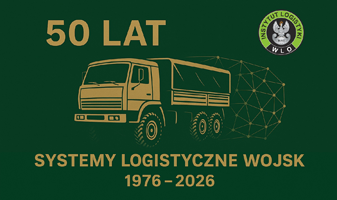ORIGINAL PAPER
Challenges of the military equipment acquisition system in Poland
1
Security, Logistics and Management Faculty, Military University of Technology, Polska
2
Armaments Policy Department, Ministry of National Defence, Polska
A - Research concept and design; B - Collection and/or assembly of data; C - Data analysis and interpretation; D - Writing the article; E - Critical revision of the article; F - Final approval of article
Submission date: 2025-01-04
Acceptance date: 2025-09-18
Publication date: 2025-09-30
Corresponding author
Paulina Zamelek
Security, Logistics and Management Faculty, Military University of Technology, Kaliskiego, 01-892, Warszawa, Polska
Security, Logistics and Management Faculty, Military University of Technology, Kaliskiego, 01-892, Warszawa, Polska
SLW 2025;62(1):159-174
KEYWORDS
technical modernisationmilitary equipmentoperational capabilitysystem life cycle managementarmaments policy
TOPICS
ABSTRACT
This article investigates Poland’s military materiel acquisition system, highlighting the persistent challenges that hinder its effectiveness and alignment with contemporary defence needs. Despite over two decades of experience in system development, structural inefficiencies and procedural inconsistencies continue to constrain its performance. The research niche lies in the limited specificity of the academic discourse on military acquisition in Poland, underscoring the necessity for systematic evaluation and reform.
The study aims to assess the effectiveness of Poland’s military acquisition framework, focusing on its capability to support the operational capabilities of the Polish Armed Forces within the broader context of technical modernisation. It is guided by the hypothesis that systemic and procedural barriers undermine the efficiency of Poland’s military acquisition, limiting its ability to adapt to evolving defence requirements. Employing analytical methods such as comparison, synthesis, and generalisation, alongside logical reasoning techniques including deduction, induction, and analogy, the article provides a nuanced understanding of the system’s complexities.
Key findings reveal that the system’s predominant equipment-focused rather than capability-oriented approach undermines the creative development of defence capability. Challenges such as frequent regulatory changes, fragmented organisational structures, and the absence of a unified life cycle model further exacerbate inefficiencies. The authors conclude that transitioning to a capabilities-based framework, harmonised with NATO standards, and enhancing the legislative and organisational underpinnings of Poland’s armaments policy are vital steps. Addressing these issues is critical for improving acquisition processes and ensuring the long-term operational readiness of the Polish Armed Forces.
We process personal data collected when visiting the website. The function of obtaining information about users and their behavior is carried out by voluntarily entered information in forms and saving cookies in end devices. Data, including cookies, are used to provide services, improve the user experience and to analyze the traffic in accordance with the Privacy policy. Data are also collected and processed by Google Analytics tool (more).
You can change cookies settings in your browser. Restricted use of cookies in the browser configuration may affect some functionalities of the website.
You can change cookies settings in your browser. Restricted use of cookies in the browser configuration may affect some functionalities of the website.


